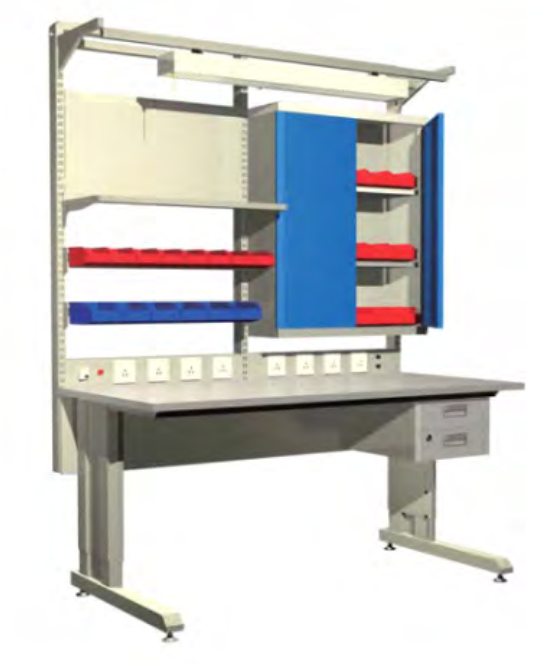In various manufacturing and servicing environments the common threat comes from electrostatic discharge (ESD). A properly designed ESD-safe workstation serves as the cornerstone to defend delicate components from static-based destruction. Using an ESD-safe workstation creates two major benefits: it lowers ESD-failure risks and it enhances the work speed and quality of your products. An ESD-safe workstation demands five critical components which you should examine during your search.
1. Essential ESD-Safe Features
Conductive Surface Materials
An ESD-safe workstation requires conducting materials for its work surface as its key component. The neutralization of static charges is made possible by using conductive or static-dissipative materials. All tabletop surfaces together with components-accessed areas require protection using resistance-based materials. ESD-safe materials encompass stainless steel as well as high-pressure laminates and special types of static dissipative plastics. The conductive surface requires suitable resistive power between 10^4 and 10^9 ohms to safely control and eliminate electrostatic charges that protect electronic components from damage.
Grounding and Connectivity
An ESD-safe workstation functions because of suitable grounding methods together with appropriate conductive connections. The workstation requires a dependable grounding point that connects to building electrical grounding system. Any static build-up from the device can be safely discharged to the ground through this grounding system. ESD wrist straps together with heel grounders and mats draw their protection capabilities from such grounding points which establish an uninterrupted path for electrostatic discharge. The workstation needs multiple features to ground equipment and provide multiple connection methods for handling different tools and devices. Comprehensive grounding practices help decrease ESD events thus creating a protected workspace.
2. Additional Features for Optimal Efficiency
Storage Solutions
The implementation of ESD-safe workstations combines both static resistance features with productive storage systems which maximize overall efficiency. The essential organization tools for an ESD-safe workstation include drawers and shelves along with bins which provide simple access to tools and components and materials. Customizable storage solutions serve a special purpose since they enable users to arrange their workplace based on particular tasks alongside workflow requirements. Sensitive electronic components need to be stored inside anti-static bins or containers as an extra defense against electrostatic discharge. Entry storage solutions create efficient workspaces along with clean arrangements that minimize risks of damaging sensitive parts.
Adjustable Components and Flexibility
Adjustable components that provide flexibility are the necessary final characteristic to find in an ESD-safe workstation. The use of adjustable workstations with modular and tilt and height features enables optimized ergonomic comfort in addition to being adaptable. The workspace needs these adjustable components to accommodate operators who have different work needs when they share the same area. Flexible workstation elements decrease occupational fatigue thereby reducing tendon problems and both job satisfaction and operational efficiency improve. Your investments in flexible workstations will enable you to match operational changes in the future thus providing fuel for long-term success.
Conclusion
Owning an ESD-safe workstation dedicated to electrostatic protection provides both ESD safety and operational efficiency to the entire workspace. Your protection against electrostatic discharge adverse effects can be achieved by giving priority to necessary ESD-safe features which incorporate conductive surface materials along with proper grounding measures. High-quality efficiency features with efficient storage solutions and adjustable components will greatly enhance both workplace productivity and comfort for employees. You achieve reliable and flexible electrostatic-safe operations for delicate electronic components through the selection of workstations containing these five essential ESD features.







